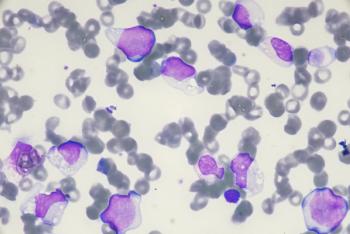
Severity of symptoms dictates optimal allergy treatment
Most allergies are due to a combination of genetic factors and environmental exposure. The first step in coping with allergies is to reduce exposure to triggers.
ALLERGIES RESULT from the immune system's over-reaction to a foreign substance. Most allergies are due to a combination of genetic factors and environmental exposures. The first step in coping with allergies is to reduce exposure to triggers.
"For outdoor allergens, the most important things are to stay indoors during the times when pollen counts are highest, and to keep windows closed both at home and in the car," says Andy Nish, MD, president of the Allergy and Asthma Care Center in Gainesville, Ga. "If someone has been outdoors for a long period of time, they might consider washing their hair and changing their clothes when they come indoors."
Neeta Ogden, MD, a solo practitioner in Closter, New Jersey who specializes in allergy, asthma and immunology, notes that pollen counts are usually highest in the early morning and early evenings, though it varies depending on the specific pollen. She encouragers her patients to go online and sign up for a local pollen report they can receive via email.
"It can be helpful to reduce dust-catchers and eliminate carpet, particularly in the bedroom," he says. "If someone is allergic to an indoor pet, we encourage them to consider finding the pet a new home."
Antihistamines are typically used to treat allergies, since they relieve the irritating sneezing, itching, and runny nose and may help reduce congestion.
"First-generation antihistamines such as Benadryl [diphenhydramine] or Chlor-Trimeton [chlorpheniramine] and others are inexpensive, but even in usual doses they may cause somnolence, interfere with learning and memory, decrease work productivity, impair performance, and increase the risk of on-the-job injuries," says Mark Abramowicz, MD, editor-in-chief of The Medical Letter on Drugs and Therapeutics, a non-profit newsletter that critically appraises drugs.
SECOND GENERATION ANTIHISTAMINES
The second generation of antihistamines, also called "non-sedating" antihistamines, generally doesn't have these side-effects, because they do not cross the blood-brain barrier. Some of them, such as Claritin, Zyrtec, and Allegra, are now available as generics. Claritin and Zyrtec, are available over-the-counter.
"Claritin (loratadine) and Clarinex (desloratadine) are nonsedating in recommended doses, but sedation may occur with higher doses," says Dr. Abramowicz. "Allegra (fexofenadine) is free of sedative effects, even in higher-than-recommended doses, while Zyrtec (cetirizine) is potentially more sedating than some other second-generation agents."
SHOTS EFFECTIVE FOR SEVERE ALLERGIES
According to Dr. Ogden, allergy shots are appropriate for people for whom medications no longer work, who have relatively severe symptoms.
"The schedule is variable because we have to monitor each patient closely and see how they react, but for a patient with no complications, it would typically be one shot a week for six months, then two shots a month, and after about a year only one shot per month." Typically a patient continues receiving allergy shots for three to five years. "In my experience, the shots are helpful and effective," Dr. Ogden says. "After the full series, hopefully the allergies will have gone away, and I do see that in many of my patients."
Elaine Zablocki has been reporting on healthcare for more than 20 years.
Newsletter
Get the latest industry news, event updates, and more from Managed healthcare Executive.





















































